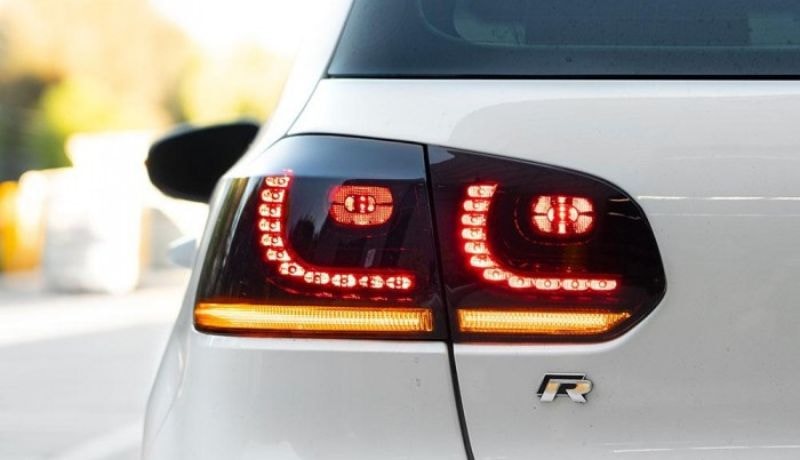If you really want to give your VW Golf MK7 (2013-2017) a fresh look while improving nighttime visibility during drives, upgrading the taillights might just be the easiest modification.
In this guide, we will talk about MK7 and MK7.5 differences, Golf GTI LED styles, fitment, wiring, and everything that goes with it legally. Let’s go!
OEM vs. Aftermarket: The MK7 vs. MK7.5 Difference
MK7 and MK7.5 are both terms in the same respective generation. The MK7 started in about 2013, while it was supposed to end around 2016; in North America, this time frame shifted to 2015-2017. The MK7.5 facelift started in 2017.
So, what has actually changed? Facelift encompasses new bumpers, a neater grille, and – most importantly – a complete rework of the taillight replacement setup. The MK7.5 lights come with full LED headlight arrays, sleeker internal geometry, and extremely dramatic lighting patterns.
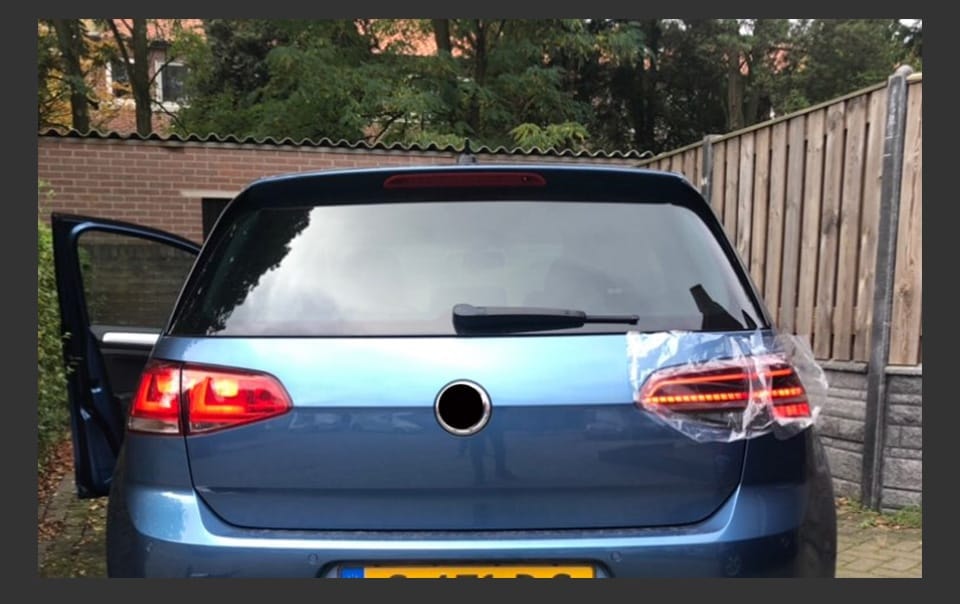
With respect to the LED bars, the design of the MK7.5 is far more crisp, more Audi-like, as compared to the halogen-heavy design of the older MK7, thanks to advancements in optical diffraction. So if your Golf is still fitting with halogens, simply changing to LED will enhance its entire look.
But here is the catch: MK7.5 tail lights cannot just plug into an older MK7. The reason is that a little change was made to the connectors and internal wiring, specifically in adapter harnesses, or coding tweaks are often required.
Halogen Vs. LED: Know Your Starting Point
Before purchasing anything, see what is actually installed on your car. Most base and mid-trim MK7 Golfs were fitted with halogen tail lights – regular bulbs for brake, turn, and running lights.
Factory-installed LED clusters were only specified for the higher trims or special editions (like the GTI or R in certain markets), and this particular differentiation matters a lot because most aftermarket LED conversion kits are for halogen-excluding cars.

If your Golf has OEM LEDs already, you will either need an LED-to-LED kit compatible with what you have or extra adapters.
Key Features And Technologies Worthwhile To Pay For
Let’s have a look at some of the important features:
Sequential Turn Signals
The sequential amber turn signal, with its flowing animation in which the light sweeps outward, is one of the most fitting upgrades. The costs of such premium aftermarket LED sets usually include that specification when ordering from VLAND, VLAND USA, or VLANDVIP, typically delivered within a business day.
It is that kind of attention to detail that helps the feel of the Golf being brand new, albeit from another era.
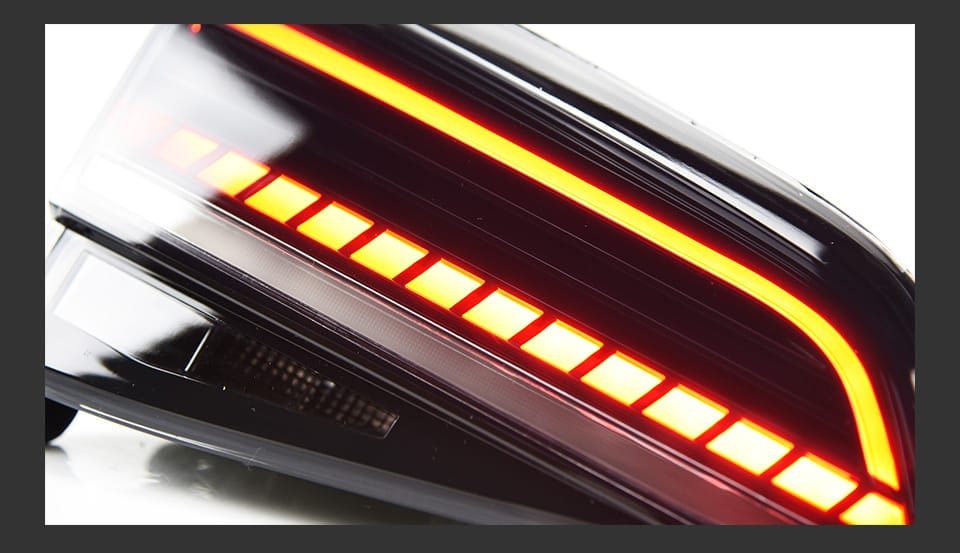
Full LED Functionality
The very best kits claim LEDs for everything: brake, running, reverse, and fog, utilizing advanced photoluminescence technology. This, therefore, gives one brighter brake lights, whiter reverse lights (“diamond white” being a common term), and consistent color matching throughout the entire cluster.
It is only when you have followed behind a fully LED-equipped vehicle that you will realize just how much brighter and sharper in contrast LEDs are.
Styles And Finishes Of The Lens
Aftermarket lights come with several finishes. The three most popular finishes are:
Smoke/Black (Dark Tint): Aggressive look, sporty, “night mode.”
Red Lens: Classic OEM+ appearance, bright and clean.
Clear / Red-White Hybrid: More Euro-style, elegant, and crisp.
Smoked lenses look stunning on darker colored cars, but can slightly reduce brightness due to light attenuation. If you care about maximum brightness or strict road legality, then red lenses are a safer bet.

Quality Sealing & Waterproofing
Condensation issues seem to come up constantly in owner discussions. Cheap units usually have very bad seals, allowing the moisture to cloud the lens through capillary action. From there, you’re left with streaking, corrosion, or possibly even electrical shorts.
Choose brands that provide waterproof construction, sealed gaskets, and pressure-tested housings. This is one of those unglamorous details separating a $250 set from one costing $400+.
Plug-and-Play Design
Almost every manufacturer describes “plug-and-play” compatibility. For simple functions, like brake, running, and turn signal, many might just plug and play.
However, for full features such as sequential indicators or startup animation, you might need either adapter harnesses or some coding via OBD11 or VCDS.
True plug-and-play kits should include all necessary cables and resistors, and there should be no errors on the dashboard.
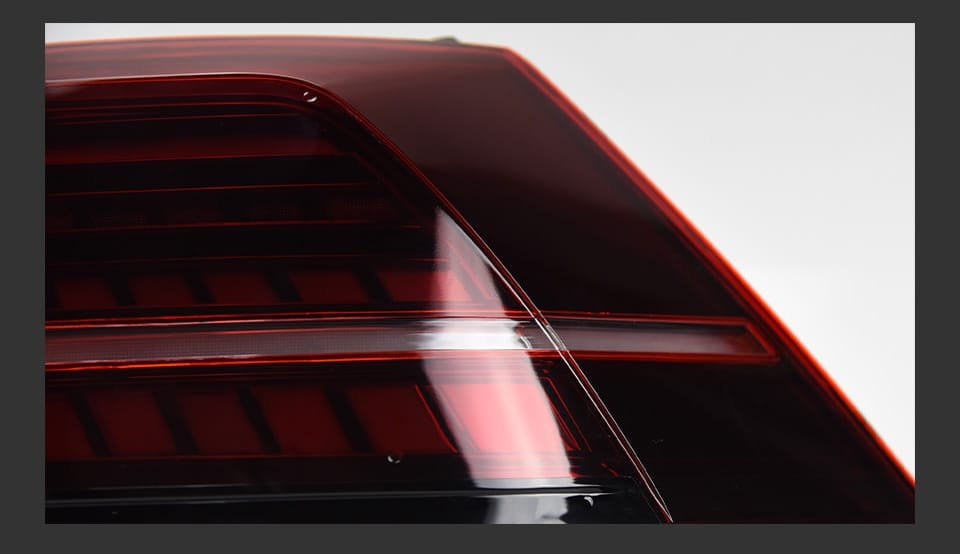
Certification: E-Mark, DOT, SAE
When you drive on a day-to-day basis, having the right certification becomes important. E-Mark (for Europe) and DOT/SAE (for North America) markings imply that the lights meet safety standards for brightness, color, and beam pattern.
Some of the cheaper imports don’t have such approvals, making them technically “for off-road use only.”
Russian and Compatible – Don’t Skip This Section
Kind of boring, but this is where most people seem to make a mistake.
Several aftermarket taillights clearly say “Hatchback Only.” The Golf Variant, Wagon, and Alltrack use totally different shapes in the rear, so those lights simply won’t fit. Always double-check that your car skirts fit the hatchback body type before you order.
Next are the years. As noted, European MK7s run from 2013–2016, while North American MK7s start in 2015 and go to around 2017 before the MK7.5 facelift comes along, marking a shift in design evolution. Mixing those year ranges can lead to mismatched connectors or slightly misaligned housings.
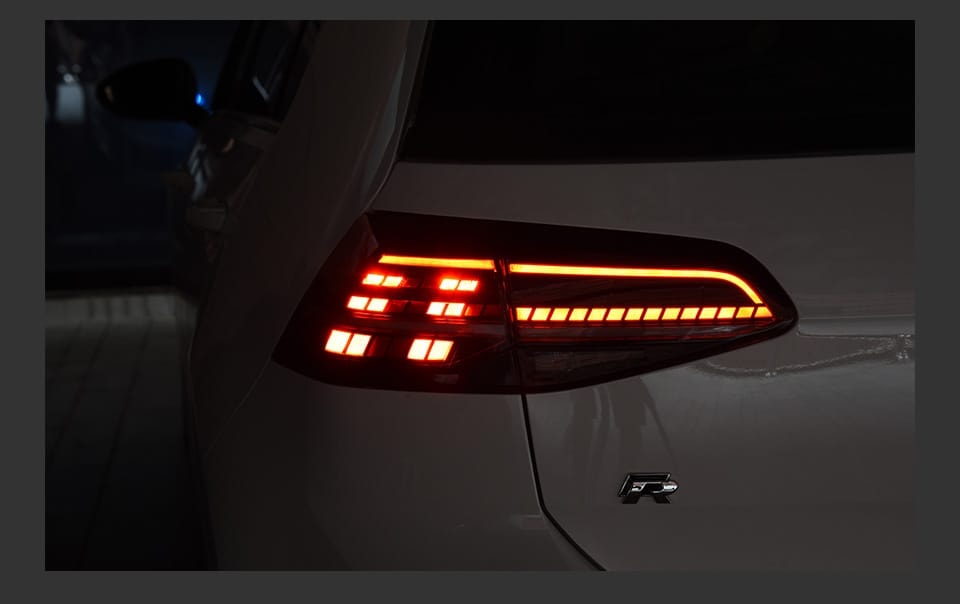
Also, clause your trim. GTI and R models sometimes have pin configurations that differ. Many listings even state, “Not for GTI/R / Wagon / Variant.” Take their word for it.
Last but not least, double-check your current light specification, i.e., halogen or LED. Most aftermarket models are for halogen cars, and in case you already have LEDs, you might require a retrofit harness or an LED-compatible kit.
Tail Light Upgrades in Demand and Real Product Examples
Now, let us get specific about some popular aftermarket and OEM-style upgrades that have earned themselves a solid reputation within the Volkswagen world.
VLAND Full LED Tail Lights
Probably the most common choice for MK7 owners. Full LED operation, sequential amber turn signals, and optional red or smoked lenses are all available options for these lights.
The materials and workmanship provide decent value for the price (typically ranging from $250-$350 a set), and these are mostly plug-and-play for halogen cars. The design follows the rerounded MK7.5 look for a modern finish on a dated rear-end signature for your pre-facelift Golf.
BayOptiks LED Tail Lights
Essentially designed for halogen-equipped Golfs, BayOptiks lights are known for E-Mark certification and excellent brightness. They have a clean Euro aesthetic – more OEM, less “aftermarket show car.” Perfect if you want subtlety with performance.
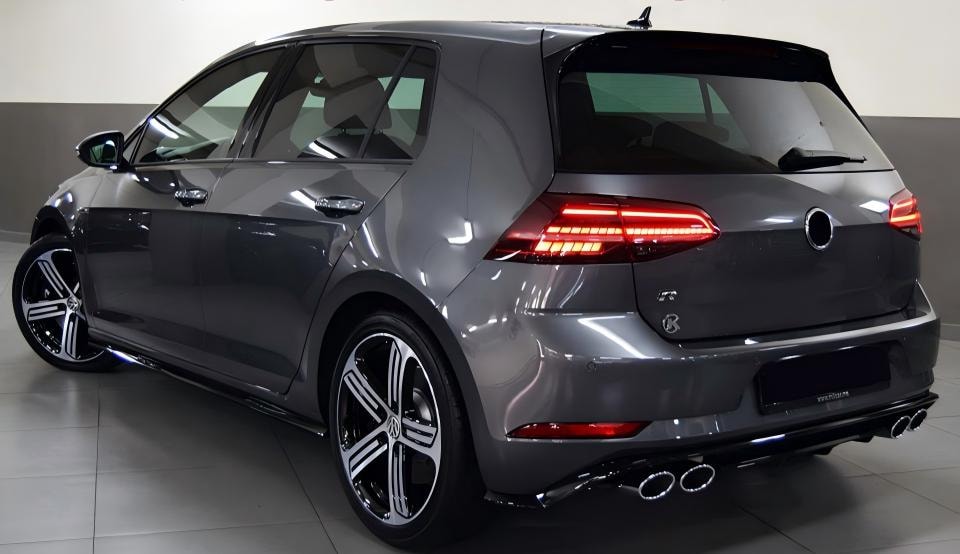
K2 Industries Smoked LED Tail Lights
This one pulls a darker and stealthier guise; the most popular mode among GTI owners looking for a blacked-out theme. This system works great on pre-facelift models (2012–2017) and uses high-contrast LEDs to ensure visibility despite the smoke tint.
USP Motorsports Dynamic Retrofit Kit
It allows retrofitting genuine MK7.5 dynamic LED tail lamps onto your older MK7. The harness is included and replicates factory behaviors like sweeping turn signals and startup animations. Pricey? Yes, but worth it for OEM fit and finish? Definitely.
OEM MK7.5 LED Tail Lights
If your budget allows, you can get genuine VW MK7.5 LED tail lights and a harness to retrofit from DAP or ECS Tuning. You get factory quality and reliability, but you will need arcade tools to turn off the warning lights or correct behavior. This path often costs double but lasts longer.
Electrical, Wiring, and Coding Concerns
This is where it gets tricky. People assume that if the connector fits, everything will work. Unfortunately, that is not always the case.

Harnesses and Adapters
Depending on halogens or LEDs, special harnesses may be needed when your car is manufactured. For instance, VLAND MK7.5 lights in a halogen MK7 may require an adapter harness to power sequential indicators correctly.
GTI and R trims, which use different lighting modules, also often need extra resistors or harness kits to avoid hyper-flashing or signal errors.
Coding Changes
The Body Control Module (BCM) is permanently checking bulb resistance in line with safety standards. When halogens are replaced with LEDs, the resistance changes, and BCM determines that bulbs have gone out, triggering the dash warnings.
That is fixed with coding and derives from tools such as OBD11 or VCDS, where the BCM can be configured to recognize LEDs. Some installers might even modify the coding to have “dynamic turn signals” or adjust brightness levels for daytime versus nighttime driving visibility.
A few “no coding needed” kits actually work well out of the box, but most of them will have their features limited until coding is done. If you are not comfortable coding, find a VW specialist-that is a one-time job and worth every penny.

Potential Electrical Issues
Most issues, such as dim brake lights not switching on, failure of turn signals, or poor performance of the fog lights, may be a result of poor installation. Top your worries by checking ground connections and ensuring that the harness pinouts are equal in both cables.
Common Issues & Quality Watch-Outs
Like any mod, there are a few things to keep in mind about tail light upgrades.
Condensation and Moisture
First off, one of the top complaints is moisture inside the lens. If you see some fogging after a rainy day or a nice car wash, there is usually a bad seal or a gasket missing somewhere.
To prevent that, run a bead of automotive-grade silicone around that seam to prevent water under the headlight or tail light while installing it, and make sure that the rear housing clips sit flush.
Fitment Issues
Not all castings made by other manufacturers will match the OEM perfectly. Unfortunately, some poorly made products have either a slight misalignment or really loose mounting tabs. Always dry-fit before tightening screws, and if it does not fit perfectly, do not force it. That’s how tabs crack.
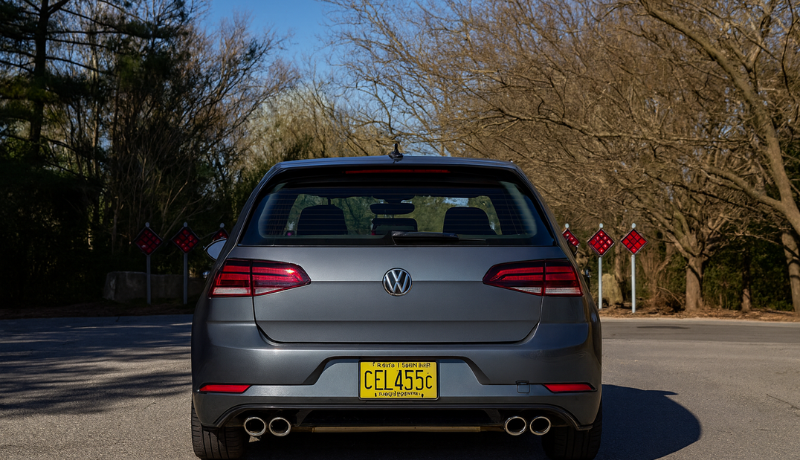
Legal Issues
Smoked lenses make the car look awesome, but they never really have road legality attached to them. Many countries have laws set in place that require the tail lights to emit certain minimum levels of brightness regarding certain directional colors.
Some LED headlights and taillights provide maximum legality while keeping the aesthetic and appeal of the car.
Dash Errors or Malfunctioning
Warning lights after installation are highly uncommon. In most cases, it is caused by a coding mismatch or a resistance value difference. It is easily resolved by proper adapter kits and coding sessions.
Conclusion
Upgrading the tail lights on your VW Golf MK7 or MK7.5 is one of those small changes that makes a big difference. A clean set of LEDs gives your car a sharper, more modern look and improves visibility at night. Just make sure you know whether your car uses halogen or LED lights before buying, and check that the new ones are certified and properly wired.
Good LED taillights don’t just look cool. They last longer, use less power, and make your Golf stand out in the best way. Go for reliable, road-legal options instead of cheap knockoffs, and you’ll get that OEM+ finish every VW driver loves.
Light Up Your Drive – Get Smart with CarLightVision
Beyond just styling, the upgrade of the VW Golf MK7 tail lights quickly adds safety and that touch of modern “OEM plus” appeal. It is thus extremely important to select the right set: fitment, the right amount of LED, the right everything.
With CarLightVision, you are looking at premium, certified, and perfectly fit LED changes. Contact us today and change your driving experience, and let us become your most trusted partner to improve your business.
FAQs
Q1. Will MK7.5 lights fit my older MK7?
In physical terms, yes. Electrically? Probably. Most likely, you are going to need a harness or have to make some modifications. There are many kits that do just that, but just ensure that you are getting one made for your specific year and trim.
Q2. So, do I need coding for sequential LEDs?
In most cases, yes. Without that, the indicators will either not sequence properly or simply throw an error. Some brands claim, “No coding required,” but the effects are variable.
Q3. Are smoked lenses legal everywhere?
Not at all; it depends on the road regulations of your country. In most parts of Europe and in North America, lightly smoked lights are generally allowed as long as brightness and color are within regulations.
Q4. What is the difference between cheap and premium DM lights?
Build quality. Premium units have better sealing from moisture, better LED chips, and better-fitment tolerances, whereas cheap ones simply fog up and fade.
Q5. Do LED brake lights make the car safer?
This is supported by technical reasoning. Compared to halogen lights, LED lighting has a faster on time, which allows the drivers behind you to perceive your brake and react just a split second earlier, thus making a difference in your ability when you have to suddenly brake.



